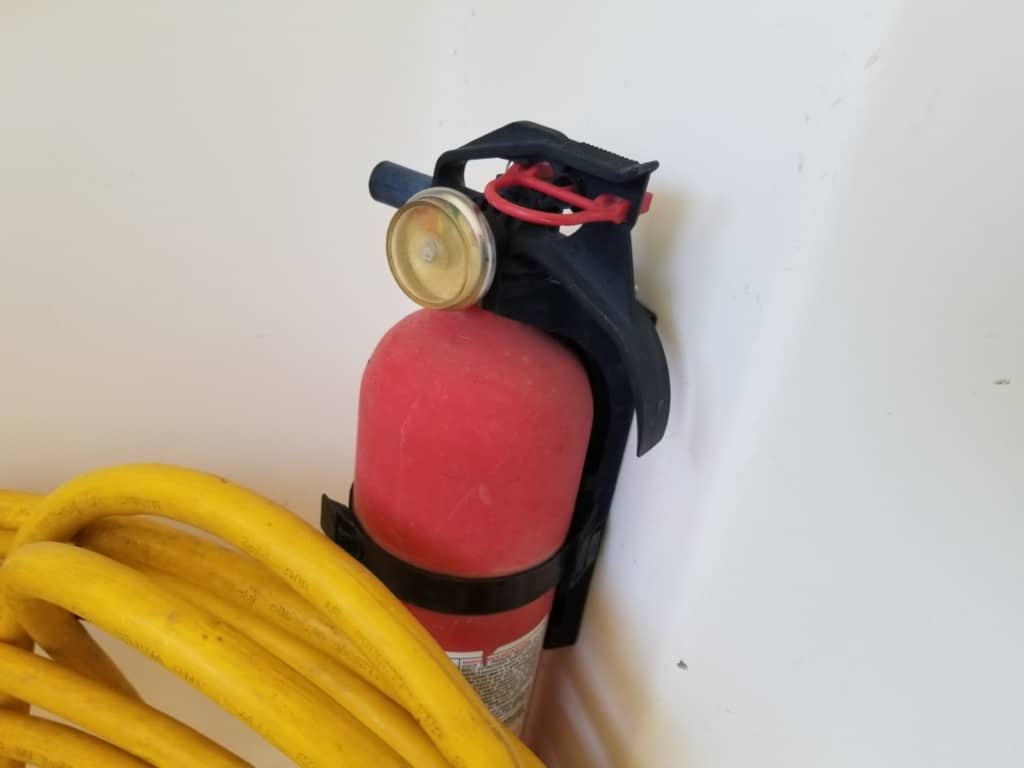As a responsible boater, it’s essential to have the proper fire extinguisher on board to ensure the safety of everyone on your vessel.
This article will guide you through determining whether you need a fire extinguisher on your boat, the different types and classes of fire extinguishers, marine-approved fire extinguishers, and other relevant information to help you make an informed decision.
Do You Need a Fire Extinguisher on Your Boat?
The need for a fire extinguisher on your boat depends on the boat’s size, type, and certain exemption factors. According to the regulations, you are required by law to have a fire extinguisher on board if your boat has an engine and meets any of the following conditions:
- Your boat has closed compartments where portable fuel tanks may be stored.
- Your boat has a double bottom that is not sealed to the hull and that is not completely filled with flotation materials.
- Your boat has closed living spaces.
- Your boat has permanently installed fuel tanks.
- Your boat has any inboard engine.
However, if your boat is less than 26 feet in length, uses an outboard engine, fuel is in a portable fuel tank, and there are no areas within the boat where fuel vapors can be trapped, the boat is not required to have a fire extinguisher. It is, however, still recommended.

Different Types and Classes of Fire Extinguishers:
Fires are classified based on their fuel source: solid, liquid, or electrical. Each fire burns differently and requires a specific type of extinguisher. Fire extinguishers are marked with a letter, such as A, B, or C, which indicates the class of fire extinguisher and the class of fire it is designed to put out.
- Class A: Combustible solids (e.g., wood or paper)
- Class B: Flammable liquids (e.g., gasoline, oil, or grease)
- Class C: Electrical fires
Since gasoline fires are the most common type of boat fire, marine-rated Class B fire extinguishers are typically required on most boats. The number before the B (e.g., 5-B or 20-B) indicates the square footage of the fire the extinguisher can put out.
It is important to note that you can also get fire extinguishers that can handle multiple types of fires. A Class ABC fire extinguisher, which can handle all fires, is the most recommended class of extinguisher.
Is My Fire Extinguisher Marine-Approved?
To determine if a fire extinguisher is approved for use on boats, check the label on the bottle. It should state “Marine Type – USCG Approved.” Underwriters Labs approves fire extinguishers on behalf of the US Coast Guard.
Number of Fire Extinguishers Required:
Based on your boat’s length, you will need a specific number and type of fire extinguishers:
- Boats less than 26 feet: One 5-B fire extinguisher
- Boats between 26 and 40 feet: Either two 5-B fire extinguishers or a single 20-B fire extinguisher
- Boats between 40 and 65 feet: Either three 5-B fire extinguishers, or one 20-B fire extinguisher and one 5-B fire extinguisher
When Do I Need to Replace My Fire Extinguisher?
A marine fire extinguisher’s age can affect its effectiveness, and it’s essential to replace or service it when it becomes too old. The age at which a fire extinguisher is considered too old depends on whether it’s disposable (non-rechargeable) or rechargeable.
For disposable (non-rechargeable) marine fire extinguishers, they must be removed from service 12 years after their date of manufacture. You can find the date of manufacture stamped on the bottle or marked next to the Underwriters Laboratories Inc. (UL) label.
Rechargeable fire extinguishers don’t have a specific age limit. Instead, they require regular maintenance and servicing. The date of manufacture for a rechargeable fire extinguisher is printed on the label of the bottle, and the first National Fire Protection Association (NFPA) certified inspection is due one year from that date. A rechargeable extinguisher needs to be maintained annually by a technician.
In addition to the age of the fire extinguisher, it is important to regularly check the pressure gauge or indicator to ensure it is in the operable range or position, verify the lock pin is firmly in place, ensure the discharge nozzle is clean and free of obstruction, and inspect the extinguisher for visible signs of significant corrosion or damage.
